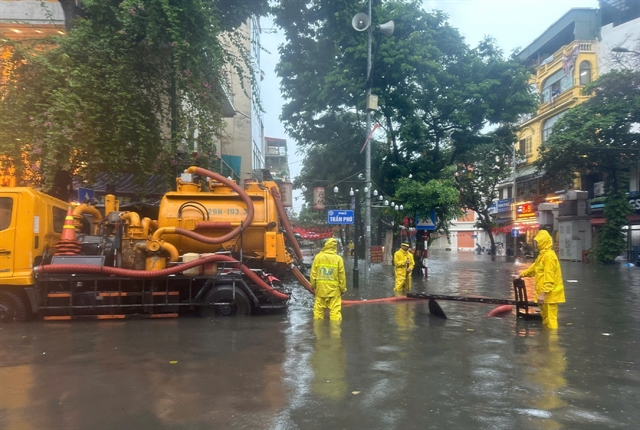 Society
Society


|
| A woman uses a handheld fan in Hà Nội. The average temperature of July this year. — VNA/VNS Photo |
HÀ NỘI — Việt Nam is likely to experience slightly higher temperatures in July this year with one or two typhoons expected to hit the East Sea, according to the National Center for Hydrometeorological Forecasting.
There is a possibility of one or two typhoons and tropical depressions in the East Sea (internationally known as the South China Sea) that could affect the northern and north central regions of Việt Nam, said the deputy head of the Climate Forecast Department at the National Center for Hydrometeorological Forecasting, Nguyễn Đức Hòa.
The north central, northern midlands, and central regions are expected to experience more hot days than average days over the next few years.
The northern midlands and north central regions will experience heat waves for around 10-15 days in the first half of July. The heat waves may last longer in the northern and central coastal regions.
The southwest monsoon is likely to cause many days of rain and thunderstorms in the Central Highlands and southern regions. There may be days with heavy thunderstorms and rain in the late afternoon.
"Throughout the country, it is necessary to continue monitoring the occurrence of thunderstorms, whirlwinds, lightning, and hail, especially in the northern, Central Highlands, and southern regions," Hòa said.
He added that the average temperature of July this year will be about 0.5 degree Celsius higher than the average of previous years. In the northern and northern central regions, the temperatures may be 0.5-1 degree Celsius higher.
Hòa said due to the impacts of heat waves, especially in the northern and central regions, residents and authorities need to be vigilant against the risk of fires and explosions in residential and production areas due to the increased demand for electricity.
He said there is a high risk of forest fires, especially in the central region.
Dangerous weather phenomena such as thunderstorms, whirlwinds, lightning, and hail continue to occur throughout the country, which can significantly impact production and daily activities, Hòa said. — VNS




